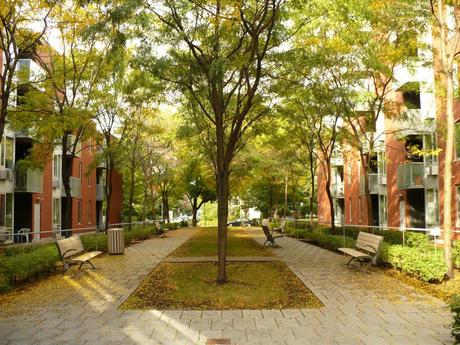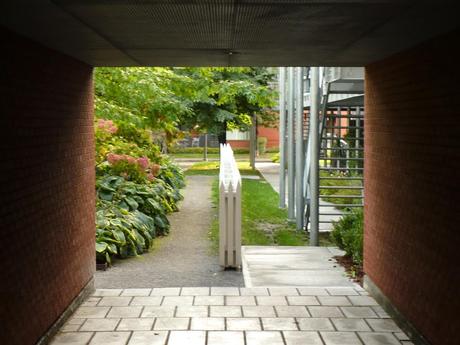
Benny Farm was first developed in the years immediately following the Second World War. Returning veterans needed homes for their families and the country needed housing to deal with the impending baby boom. In the Late 1940s the Canadian government built a number of apartment buildings on the site of what was then a former farm on the western edge of Montreal. The project was, and remains one of the largest government housing projects ever undertaken in the country. The property and the apartments were maintained for a number of years under the auspices of the Department of Veterans Affairs, and then by the Canada Mortgage and Housing Corporation, (CMHC).
In the 1950s and 1960s thanks to most residents being of the same age, community life at Benny Farm thrived due the prevalence of many young families (hello baby boom!) Historical accounts suggest that during the 1950s there were over a thousand children on the property. However in the 1980s the age homogenization began to work against Benny Farm as the mean age of residents rose to 70 years. Most of the buildings had not been well maintained, and the post-war three story walk ups with no elevators or air-conditioning were increasingly difficult for elderly residents.

Arnold Bennett, and Jason Hughes helped spearhead the battle to keep Benny Farm affordable, arguing for public and affordable housing rather then private development. For a long time it seemed that the site would end up going to private developers who would build standard condo style units that would price many area residents out of the market. While there are many people and events that were responsible for making Benny Farm what it is today, the eureka moment came when the team realized that nothing was stopping the the Habitations communautaires NDG, (HCNDG) a community-run non-profit corporation, from bidding on the parts of the site that were open to the private sector. The idea was to create a non-profit, community-run organization that would offer and manage the units at a below market rate. The proposal went over very well with the community and over 80 people had signed statements of interest by the time the HCNDG submitted a bid to the Canada Lands Corporation for three sites, with a total of 74 units. The ‘Affordable Home Ownership Initiative’ was awarded the sites after beating a number of private developers who submitted more traditional site concepts.

The new Benny Farm site includes a diverse mix of housing types, over 200 rental properties, a public health clinic, recreation centre, community garden, daycare, and other neighbourhood services. The property was also developed with sustainability in mind and features; Geothermal heat exchange, hybrid glycol/electric solar power, air- and water-based heat recovery. There were plans for grey-water and storm-water reuse, wetland treatment and sub-grade water-table recharge, but news reports indicate that the water reuse was never installed and I was unable to spot evidence of a wetland on my site visit. A non-profit, community-run utility owns and manages the energy infrastructure as well as continued re-investment in sustainable construction for this infrastructure. The utility was set up with a legal structure similar to that of a cooperative housing development. Green Energy Benny Farm (GEBF) is owned and controlled by a voluntary, user-driven board, and the project has won at least one award; The Bronze Prize at Global Holcim Awards.

